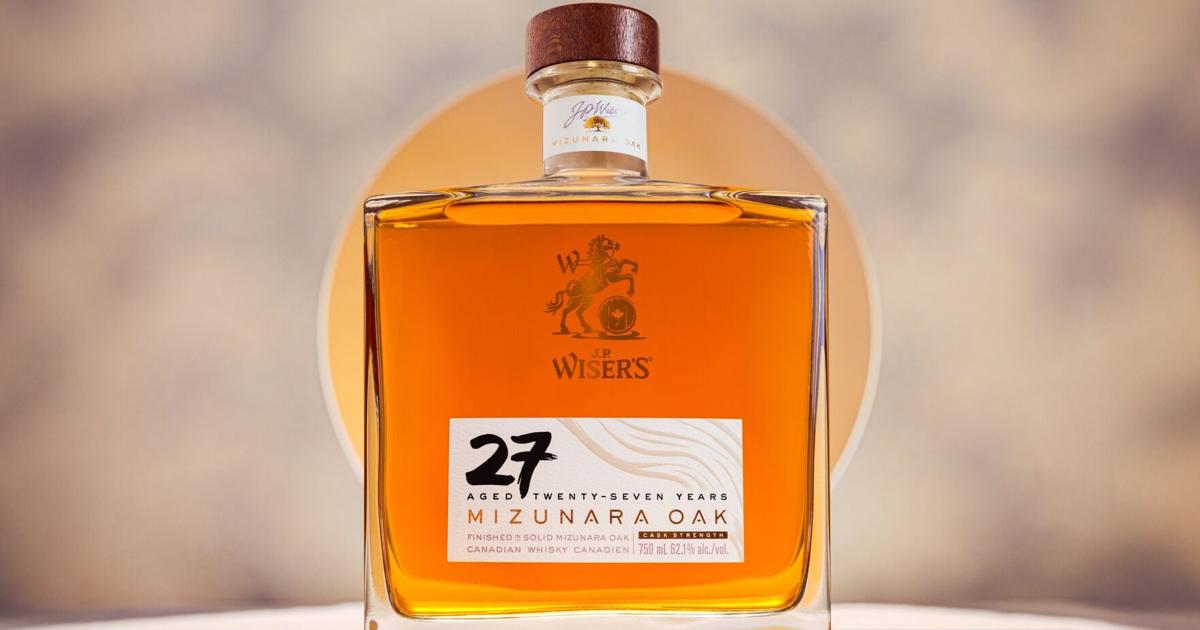It’s not your grandfather’s Canadian whisky.
Never mind that it’s 27 years old, and aged in a barrel made from rare, highly sought-after Japanese oak called Mizunara.
Perhaps the most jarring thing about the latest offering from J.P. Wiser’s is the price: $599.95.
No, this isn’t something you should be mixing with ginger ale.
Following in the footsteps of the world of single malt Scotch and other prized whisky from around the world, Canadian distillers have been increasingly pushing the envelope with higher priced, premium offerings.
The goal? Raising Canada’s profile among whisky aficionados — both at home and around the globe. And that requires some bragging that hasn’t always come naturally here, said the man behind J.P. Wiser’s 27-year-old Mizunara Cask.
“As Canadians I don’t know whether it’s our apologetic nature or what it is, but we just don’t go out there and celebrate the good storytelling behind our brands,” said Don Livermore, master blender at Windsor’s Hiram Walker distillery, owned by Pernod Ricard. “I don’t think we spread the word within our own country and worldwide. I think that’s where we’ve lacked for years and years and years.”
Livermore is a big defender of something which has sometimes hurt Canadian whisky’s image with some aficionados: the Canadian tradition of blending whiskies from different batches and grains together, something frowned upon in the tradition-laden world of single malt Scotch.
“Blending is beautiful,” insisted Livermore, who blended a rye whisky and a corn whisky together before aging them for two years in the Mizunara casks.
Mixing the intensity of a rye whisky together with a gentler, slightly sweeter corn whisky allows flavours to develop in the same way that putting an eye-dropper of water into an overproof single malt can, Livermore said.
“It stretches out the flavours just like an accordion and when you drink the whisky it’s like storytelling,” said Livermore.
While the price tag of the latest Wiser’s release might seem eye-popping, it’s a relative bargain compared to high-end single malt Scotch, said Blair Phillips, co-author of the Definitive Guide to Canadian Distilleries.
“You’d be adding zeroes to that price,” said Phillips.
Still, there’s no mistaking that this is a premium price, said Phillips, something that could help Canadian whisky shed its image among many consumers as something cheap and pleasant but non-descript, best mixed with pop.
“I really hope it brings more legitimacy to the category, that it wakes people up and shows we can play in the big leagues,” said Phillips.
The Mizunara cask by Wiser’s was edged out in price by a 35-year-old Canadian whisky released a decade ago, but that one had extremely limited distribution, said Canadian whisky historian and author Davin de Kergommeaux.
“This is the most expensive one that’s ever been in a government liquor store. I’ll put it that way,” said de Kergommeaux.
De Kergommeaux said the Wiser’s might disappoint aficionados who’ve tried other whiskies aged in Mizunara casks, saying it doesn’t have the characteristic aromas and flavours of the Japanese oak.
“It should taste like incense, coconut, and, and sandalwood. And I get nothing like that,” said de Kergommeaux, who suspects that it may still sell well.
“I think we’re going to get a lot of Canadians raving about this because they just hadn’t tasted other Mizunara whisky. But you have to remember that Wiser’s only real market is Canada. So if they can impress the people in Canada, they’ll have another good Christmas,” said de Kergommeaux.
As for the hefty price, Livermore predicts there will eventually be another Canadian whisky which breaks the $1,000 mark, whether it’s one of his, or from another producer.
“I think eventually we’ll get to $1,000. I’m not going to say tomorrow. But yeah, I think the potential is there.”



